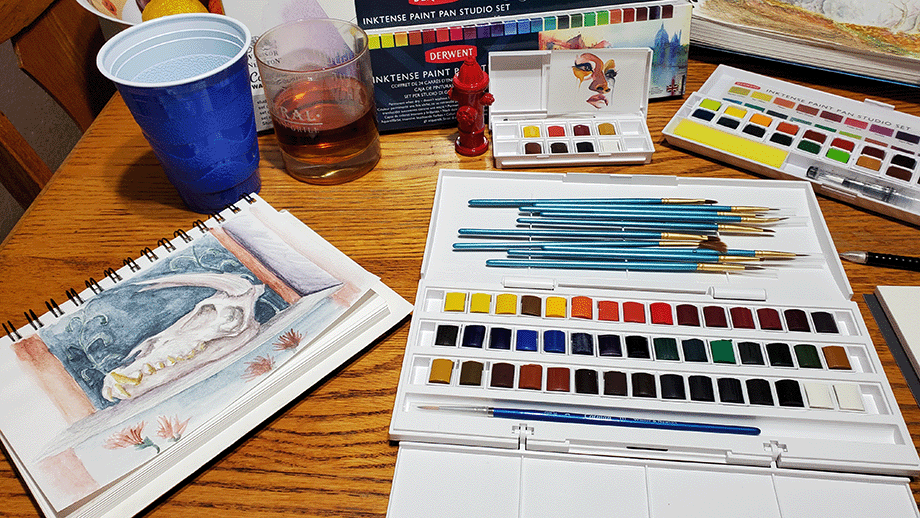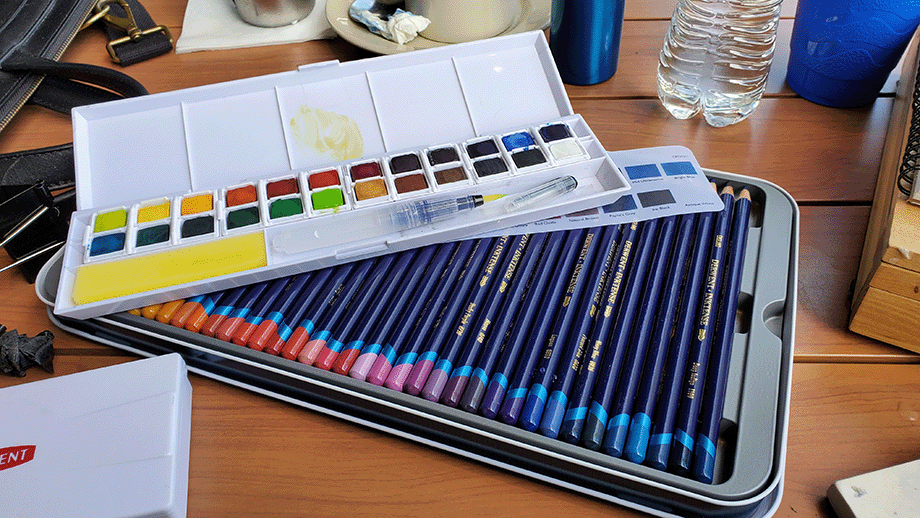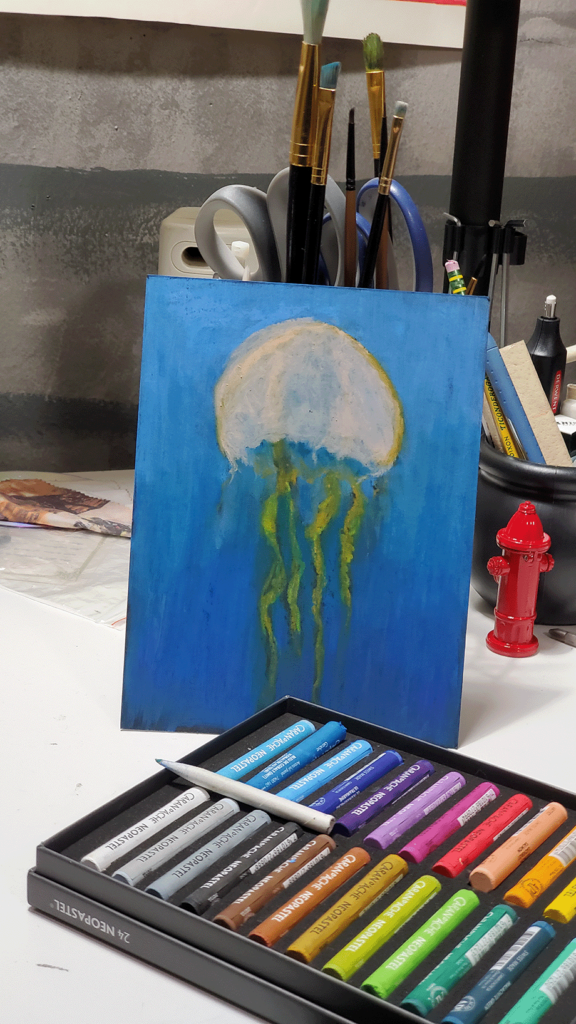As a child in the 70s, particularly one with an artistic bent, there was nothing quite so cool as the big 64 color box of Crayola crayons.
Yes, there was probably some sort of status symbolism attached to it. It was not, despite what one might think, accessible to people at all income levels.
At least, that was what my parents frequently told me, and I accept that to have been the case. The big box (with that ever so cool built in crayon sharpener) was a rare gift, one that only came every few years. It had to be shared with my brother, and frequently with cousins and other visiting children, who invariably would break the crayons, lose them, and possibly eat them.
Leaving me with a less than pristine complete set, which caused me no end of frustration. Imagine how one might feel if the neighbor borrowed the Mercedes and returned it dented, with a broken windshield and missing fender. It was that big a deal.
I’m certain this probably relates to numerous neuropsychological issues that people over the years have quasi-diagnosed my having. I have no further comment on that.
But I do have my very own 64 color box of Crayola crayons (though the sharpener is no longer included…lawyers…) that I don’t have to share with anyone else.
Possibly as a result of this trivial (yet very real to a seven or eight year old) trauma, I have a tendency to want “complete sets” of things, especially art supplies. When I find a brand and type I like, the first thing I do is go to the factory website and see how many colors are available. Then I look for how much that complete set is going to cost.
Most of them are considerably more than the 64 color box of Crayola crayons. Some of them approach the cost of that dented Mercedes.

But if I truly really want them, I will save my change and eat bologna and eventually get them. I’ve been doing this a bit more over the last few years, because my children have reached independent adult status and there’s less of an obligation to be frugal in all things.
I have apparently been collecting art supplies (because hoarding implies another one of those metal quasi-diagnoses). This is a thing called “opportunity buying”. I know this because I am a professional buyer. That’s actually part of my job description in the day job.
Opportunity buying is getting stuff when it’s on sale, on clearance, close-out, discontinued, or special reduced rate, and buying all the store has of it. Because it appears to be a useful thing that somehow someday you will need and won’t you feel oh-so-smart and oh-so-smug when you already have it.
Now much to my recent delight (and smugness) I have discovered that I bought some clearance priced oil painting supplies that I found really really cheap but frankly had no idea what they were. Now that I am working with oil paint again, and learning and relearning the various sorts of alchemies involved, I actually do have a use for these things, and now I don’t have to spend more to get them.
This joy came as a complete surprise, because, in looking for some other thing (which I still can’t find) among my collection (okay, okay…hoard) of supplies I discovered that I had bought this thing that I now could put to good use.
I hope I don’t forget where it is, when I actually get around to using it.

But I find I am considering just how much of this stuff I really do need. How many “complete sets” are actually required?
Am I simply fulfilling a kind of art Pokemon game, where owning the set still satisfies that seven year old with the broken crayons?
The set of pricey art supplies will not in and of themselves make one a better artist. That is in you. It’s focus and practice and patience.
Will it make it easier for you to achieve your vision. Potentially, yes.
If you struggle with the medium, it’s frustrating. Most artists will tell you they are already struggling with their vision versus their skills. We are never satisfied with the work that comes out (or at least mostly never satisfied). Adding another layer of combat between you and the brush or the chalk or the canvas just makes that harder.
But maybe I don’t need all the crayons. In fact, I have found that having all the crayons sometimes makes for a less expressive or inventive solution. So I am working toward having the crayons I will use (whether they be crayons, or pastels, or colored pencils, or paints, or papers) and living with the idea that if I find out I really really need another color, I can probably go get that.
I justify the use of such materials because they are formulated to outlast me. The various pieces I made back in art school, that have not already been lost or damaged by various external agencies, may have already started to fade.
The work I do now, with the better tools, has a shelf life of at least 500 years. Should my work please whatever culture exists in another half-millennia, I trust they’ll be technologically advanced enough to extend it’s preservation, much as we are now doing to save masterpieces from the Renaissance.
So it’s not entirely ostentation, to collect these materials, so long as I am actually working with them.

It was gratifying though, working on this image last night, to realize that I was simply painting with the goal of making the media work for me. That is, there is no deadline, no client waiting, it’s just picking up the tool and trying something. That’s an exquisite relief from a very long time of working for paid output.
The same applies to the numerous wares and paraphernalia associated with the practice of magic. The “aesthetic” of witchcraft is a topic frequently raised on the socials. I have my own counsel on that.
If one looks to the traditional folk magic of our species, it’s fairly obvious that witches and their like didn’t keep specialized tools displayed on elaborate shrines or altars. For one thing, doing so in a post pagan world would get one imprisoned, or killed.
More likely the broom was the same one used to sweep the hearth, the knife the same used to make the meal. The cauldron was that pot the meal cooked in, and the hearth it sat on was altar enough. In point of fact, the connection between these things used in life made them, in my personal view, more sacred and more potent, than if they were kept hidden and separate.
Does it feel “cool” to have the custom made special broom, the hand-forged athame, and the special cauldron upon the sacred altar? Sure it does. To the extent that it makes it easier to enter into an altered state of consciousness for the performance of a rite, such props fulfill the similar role that having the higher-end paint does for the artist. It removes another barrier in the creative process.
But as to the necessity, well, that’s a personal decision. In the many years I have been both an artist and a magician, I have had to make do with what I had, or what I could disguise as “normal”. I made up for the difference with willpower, ambition, and work.
So maybe we don’t need that big box of crayons. But there’s no shame in having it if we want it.

